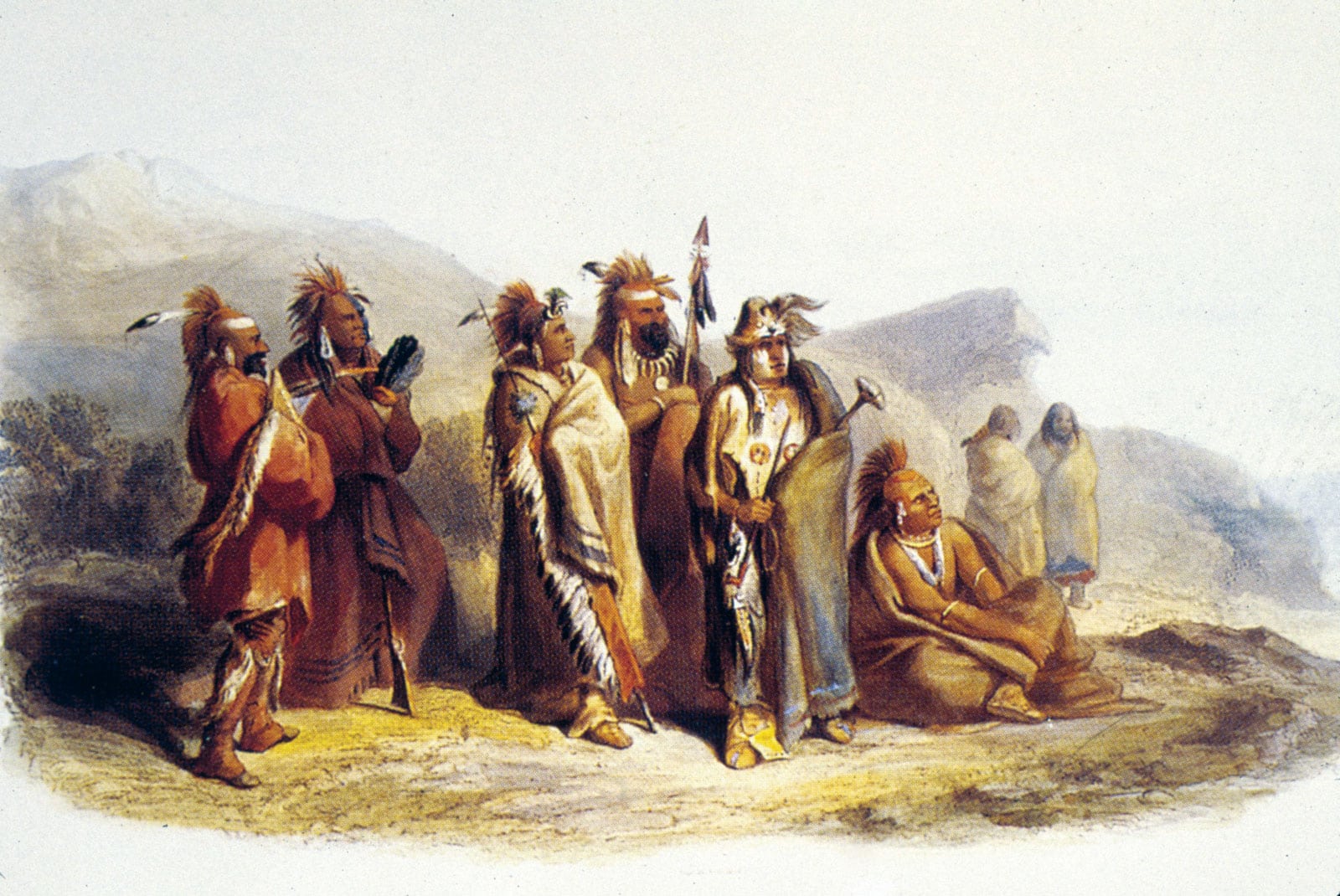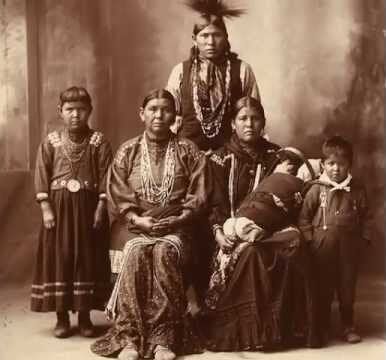The Sauk or Sac was an Algonquian-speaking Northeast Indian Tribe that developed around northern New York and migrated to what is now eastern Michigan.

They were driven from the area around the St. Lawrence River to the Detroit area, where they thrived until being forced out by the more powerful tribes of the Iroquois Confederacy.
Early History
It is believed that a fierce battle was fought between the years 1638 and 1640 that nearly destroyed the entire Sauk Tribe. The story goes that the Chippewa inhabited the lands north of Saginaw Bay, and the harsher northern climate caused more difficulty in prosperity compared to that of the Sauk occupying the area of Saginaw Valley.
The Chippewa allied with the Ottawa, who resided south of the Sauk, and sprung a series of attacks on the Sauk Tribe, which practically decimated their people. One such attack, the Battle of Skull Island, occurred on an island that is now called Skull Island in Michigan.
In this battle, it is said that the Sauk had used their boats to cross part of the river, escape to the island, and were temporarily free from their attackers.
But when morning came, ice had solidified the river enough for the Chippewa to cross. They killed every member of the Sauk tribe who had fled to that island besides twelve women whom they later sent west of the Mississippi River.
Anishinaabe expansion and the Wyandot attempting to gain regional stability drove the Sauk tribe out of their territory. The Wyandot were armed with guns supplied by their French trading partners. The Sauk moved south to territory in parts of what are now northern Illinois and Wisconsin.
In the seventeenth century, the Sauk also maintained close relations with the Potawatomi.
In a loose coalition of tribes – including Dakota, Ojibwe, Odawa, Potawatomi, Kickapoo, Meskwaki (Fox), and Sauk, along with the Shawnee, Cherokee, and Choctaw from the Southeast – they attacked the tribes of the Illinois Confederation and tried to invade their tribal areas.
Illinois became their worst common enemies. The coalition warred for years until they destroyed the Illinois Confederation.
Later, they moved out on the prairie along the Mississippi and adopted the semi-sedentary lifestyle of Plains Indians. In addition to hunting buffalo, they lived in villages, raised crops, and actively traded with other tribes.
The Sauk and allied eastern tribes had to compete with tribes who already occupied this territory. Disputes and clashes arose with the Dakota, Pawnee, and, most of all, the powerful Osage.
European Contact and Wars with the United States
It is possible that the first contact the Sauk tribe had with Europeans was with the famous explorer Samuel De Champlain, but this is disputed.
It is known that the Sauk had a good relationship with the English and French, but their relationship with the French became strained due to their alliance with the Meskwaki.
A closely allied tribe, the Meskwaki (Fox), were noted for resisting French encroachment, having fought two wars against them in the early 18th century. After a devastating battle of 9 September 1730 in Illinois, in which hundreds of warriors were killed, and many women and children were taken captive by French allies, Fox refugees took shelter with the Sac.
This made them subject to French attack in turn. The Sauk continued moving west to Iowa and Kansas. Keokuk and Black Hawk were two important leaders who arose among the Sauk. At first, Keokuk accepted the loss of land as inevitable in the face of the vast numbers of white soldiers and settlers coming west. He tried to preserve tribal land and his people and to keep the peace.
Having failed to receive expected supplies from the Americans on credit, Black Hawk wanted to fight, saying his people were "forced into war by being deceived." Led by Black Hawk in 1832, the mainly Sauk band resisted the continued loss of lands (in western Illinois, this time.)
Their warfare with United States forces resulted in defeat at the hands of General Edmund P. Gaines in the Black Hawk War.
Move to the Reservation
In 1869, the United States government forced a large group of Sauk to move to a reservation in the future state of Oklahoma.
They then merged with the Meskwaki and became known and federally recognized as the Sac and Fox Nation.
The land currently occupied by the Sauk is only a section of what used to be the Sac and Fox Reservation during the time of 1867–1891. This reservation was established by the U.S. and spanned 480,000 acres. In 1887, however, the Dawes Act failed to recognize Native American culture by dividing the reservation into small allotments designated for individual households.
The remainder of land not allotted to the Sac and Fox was then sold to non-Native settlers in an attempt to gain Oklahoma statehood and the full assimilation of its Native American population. By 1889, 519 of the tribe were located in Indian Territory, what is now central Oklahoma.
On June 10, 1890, they ceded these Indian Territory lands to the federal government

